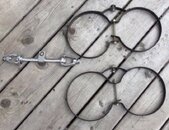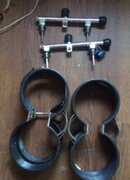Sawdust82
Registered
I dont have any experience with double tank setups, but am interested in getting into it in the future (read: after many more dives, and much more experience and instruction). I have a friend that is an instructor, but she lives in germany and only visits in the summer months, so sitting down to chat about it with her isnt really an option at the moment...
Ive ran into a few sets of manifolds and bands for sale used in my quest for a set of standard rec gear, and am wondering if any of it would be useful to pick up for later use...
My rough plan at the moment is to round up a small fleet of used al80s to have enough tanks for a full weekend of diving without having to go looking for fills. They seem to be fairly plentiful and cheap in my area (im on a budget), and i dont see many steel tanks around here for sale used. My LDS is a three hour round trip, and if theyre busy i would have to leave them and come back to pick them up. If i have to do that id like to end up with a good supply of air for lots of dives once im done driving around. I havent bought any tanks yet, but am considering a few.
So then with some used doubles stuff floating around, it got me wondering if i could/should eventually double up a couple al80s to give longer bottom times. Would likely be at fairly shallow depths, scallop diving and the like. What should a guy consider for this? Is it even a good idea? What ways can you rig a set of doubles on your back, and why would you do it?
Ive ran into a few sets of manifolds and bands for sale used in my quest for a set of standard rec gear, and am wondering if any of it would be useful to pick up for later use...
My rough plan at the moment is to round up a small fleet of used al80s to have enough tanks for a full weekend of diving without having to go looking for fills. They seem to be fairly plentiful and cheap in my area (im on a budget), and i dont see many steel tanks around here for sale used. My LDS is a three hour round trip, and if theyre busy i would have to leave them and come back to pick them up. If i have to do that id like to end up with a good supply of air for lots of dives once im done driving around. I havent bought any tanks yet, but am considering a few.
So then with some used doubles stuff floating around, it got me wondering if i could/should eventually double up a couple al80s to give longer bottom times. Would likely be at fairly shallow depths, scallop diving and the like. What should a guy consider for this? Is it even a good idea? What ways can you rig a set of doubles on your back, and why would you do it?






